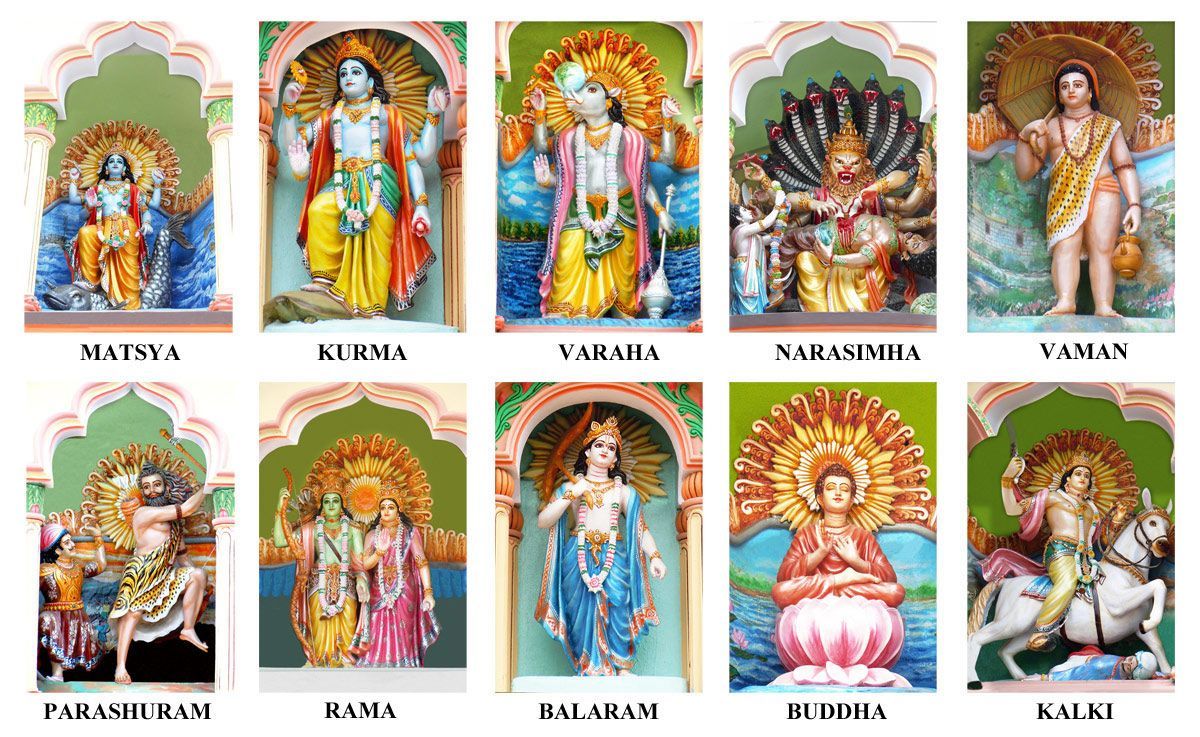The Kalki Avatar, a central figure in Hindu mythology, holds a significant position within the framework of the four yugas (epochs) – Satya Yuga (Golden Age), Treta Yuga (Silver Age), Dvapara Yuga (Bronze Age), and Kali Yuga (Iron Age). This prophecy describes the tenth and final avatar of Lord Vishnu, who is said to descend to Earth at the end of Kali Yuga, a period characterized by widespread darkness, moral decay, and societal chaos.
The Descent of Kalki: A Time of Darkness and Renewal
The Kalki Purana, one of the eighteen Mahapuranas, details the circumstances surrounding the Kalki Avatar’s arrival. It paints a bleak picture of Kali Yuga, where the virtues of dharma (righteousness) are overshadowed by adharma (unrighteousness). The Purana describes a world where:
- Knowledge wanes: Brahmins, the priestly class, lose their knowledge of the Vedas, the sacred scriptures.
- Social order collapses: Women disregard the authority of men, and individuals abandon religious practices and rituals.
- Moral decay reigns: Greed, lust, anger, and egotism become rampant, leading to widespread conflict and suffering.
- The Earth grieves: The very environment reflects the moral decay, with erratic weather patterns and widespread poverty.
Amidst this bleak backdrop, the gods, witnessing the Earth’s suffering, turn to Lord Brahma, the creator god, for intervention. Brahma, in turn, beseeches Lord Vishnu, the preserver, to intervene and restore dharma. Vishnu, accepting the divine responsibility, vows to descend as Kalki and usher in a new era of righteousness.
The Birth of Kalki: A Promise of Salvation
The Kalki Purana narrates that Kalki will be born in the village of Sambhal, in the home of a Brahmin named Vishnu Yash and his wife Sumati. His birth is prophesied to occur on the auspicious day of Vaishakh Shukla Dwadashi, marking the beginning of a new hope for humanity.
The prophecy highlights the significance of Kalki’s birth:
- Divine intervention: The very river Ganga is said to perform Kalki’s abhisheka (sacred bath), symbolizing the divine nature of his arrival.
- The role of knowledge: Vishnu Yash, a learned Brahmin, is chosen as Kalki’s father, emphasizing the importance of knowledge and tradition in the face of Kali Yuga’s darkness.
- The gathering of sages: The presence of prominent sages, including Dronacharya, Parashurama, and Ved Vyasa, at Kalki’s birth highlights the collective recognition of his divine lineage.
The Education of Kalki: A Journey of Spiritual and Martial Prowess
Kalki’s journey towards becoming the savior of mankind begins with his education. The Purana describes his pursuit of knowledge and martial skills:
- The guidance of Parashurama: Kalki seeks the tutelage of Parashurama, a revered sage and warrior known for his mastery of the Vedas and archery. This highlights the importance of both spiritual and physical prowess in the battle against evil.
- The blessing of Shiva: Kalki receives divine weapons and blessings from Lord Shiva, the destroyer god, further emphasizing his divine power and destiny.
- The mastery of 64 arts: Kalki’s acquisition of knowledge in various arts and sciences symbolizes his holistic development and readiness to address the multifaceted challenges of Kali Yuga.
The Marriage of Kalki: A Union of Divine Love and Dharma
The Kalki Purana also describes Kalki’s marriage to Padmavati, the princess of Singhal Dweep (Sri Lanka). This union symbolizes the convergence of divine love and dharma:
- The prophecy of Padmavati: The Purana narrates that Padmavati is destined to be Kalki’s wife, a woman of exceptional character and devotion to Lord Vishnu.
- The challenge of Shiva’s boon: Padmavati receives a boon from Shiva, ensuring that only a divine being can be her husband. This adds a layer of complexity to their relationship, as it challenges the traditional norms of societal expectations.
- The union of two souls: The marriage of Kalki and Padmavati signifies a union of divine love and righteousness, representing the hope for a renewed world.

The Battle Against Kali: A Clash of Good and Evil
The central theme of the Kalki Purana revolves around the epic battle between Kalki and Kali, the personification of evil during Kali Yuga. This confrontation represents the ultimate struggle between dharma and adharma:
- The rise of Kali: The Purana describes Kali as a powerful demon who wreaks havoc on the world, corrupting individuals and institutions.
- The divine warrior: Kalki, armed with divine weapons and guided by dharma, confronts Kali and his demonic forces.
- The restoration of dharma: The victory of Kalki over Kali signifies the triumph of righteousness over evil, paving the way for the restoration of dharma and the dawn of a new age.
The Legacy of Kalki: A Hope for a New Age
The Kalki Purana concludes with Kalki’s departure to Vaikuntha, the divine abode of Lord Vishnu. This departure marks the end of Kali Yuga and the beginning of Satya Yuga, a new Golden Age of peace and prosperity:
- The rebirth of Satya Yuga: The triumph of Kalki over Kali ushers in a new era of righteousness, characterized by harmony, knowledge, and spiritual advancement.
- The promise of a brighter future: The prophecy of Kalki offers hope for humanity, reminding us that even in the darkest of times, there is always a possibility of redemption and a new beginning.
Exploring the Themes of the Kalki Avatar
The Kalki Avatar prophecy offers a rich tapestry of themes that resonate with contemporary concerns:
- The cyclical nature of time: The concept of the four yugas highlights the cyclical nature of time, with periods of prosperity and decline recurring throughout history.
- The importance of dharma: The emphasis on dharma underscores its significance as a guiding principle for individual and societal well-being.
- The battle against evil: The confrontation between Kalki and Kali reflects the timeless struggle between good and evil, a theme that resonates across cultures and throughout history.
- The promise of redemption: The prophecy of Kalki offers a message of hope, suggesting that even in the face of widespread darkness, there is always the possibility of redemption and a return to righteousness.
Conclusion: The Enduring Relevance of the Kalki Avatar
The Kalki Avatar prophecy continues to hold relevance in the modern world. It serves as a reminder of the importance of upholding dharma, combating evil, and striving for a more just and harmonious world. While the specific details of the prophecy may be open to interpretation, the underlying message of hope and redemption remains enduring. The Kalki Avatar, as a symbol of divine intervention and the ultimate triumph of good over evil, offers a powerful reminder of the enduring power of faith and the potential for renewal within the human spirit.

